You might have been aware of Lesson 10, a pair of Cowmouth shoes done a while back. This pair was done a bit differently, although it also used bound edges and a bound strip as well. There were a few differences in this pair, though, the primary one being the technique used to sew the knops in the fronts of the shoe. The second – this pair is for me!
Extant pieces in the early Tudor time often had knops on the fronts of shoes. These knops were done a number of ways. One method, if the knops were not too sharp and pointy, were to cut an insole and treadsole to match, and then shoe sewn all the way around the shoe, just as was done in Lesson 10. However, not all were done in this manner.
First, a few pics of the uppers themselves. Again, these were done in a similar fashion as in Lesson 10. Binding strips were tacked all the way around the edge, and a slit in the upper was made to insert a small strip for decoration.
As mentioned, several extant pieces had insoles that followed the shape of the upper – for those with rounded knops (likely with a last to take the shape), the treadsole follows the shape of the upper. However, several extant pieces with knops seem to have had the upper “pinched,” but due to the sharp point, the insole and treadsole do not follow the profile of the upper. Instead, they cut under the pinched knop. Looking at the extant pieces, you can see both types here – the pictures were taken while I was looking through the Museum of London’s archived collection.
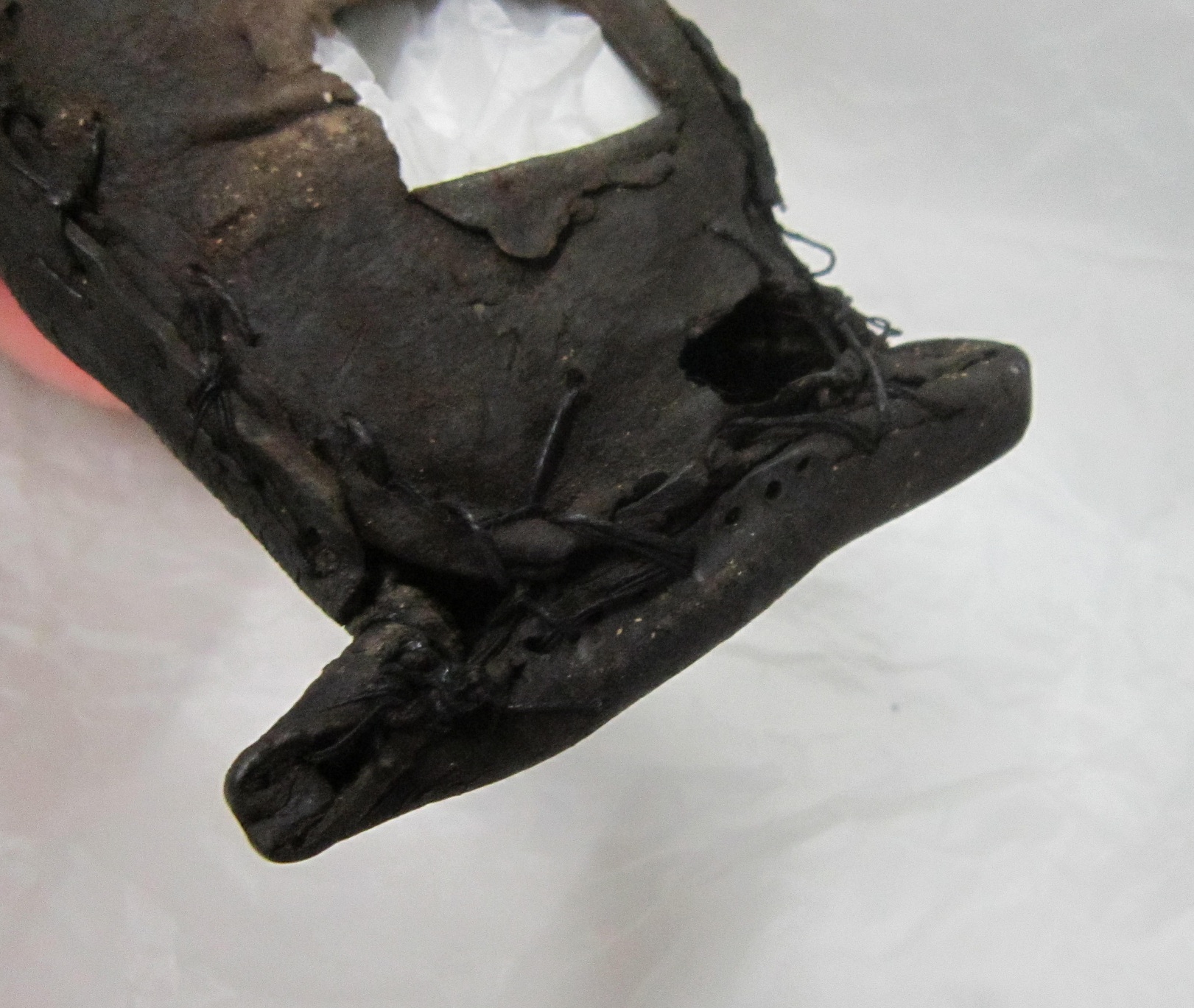
|

|
|
You can see that there is stitching around most of the upper, but that the stitching holes seem to change shape as they approach the pinched knop. I suspect that the knop was pinched and not inseamed along with the rest of the shoe. This has the advantage of not needing a last of the specific shape, yet still produces a very pleasing piece with some elements of visual interest. See the picture below for how the shoes were lasted. Now, we don’t have a great deal of evidence to know if they lasted shoes exactly in this manner – in fact, medieval shoes were almost certainly not, but a similar technique could be done with just a few tacks on the upper with the same results.
During the inseaming, you can see the welt tucked under the pinched knop and sewn to the insole.
Once the shoe is fully inseamed, the treadsole can be put on as in previous examples and lessons. However, once the sewing reaches to the knop, only one thread sews back and forth through the knop to sew it together at the bottom. If you recall, one sews the treadsole on with two threads.
Another angle is often useful – how about two? =)

|
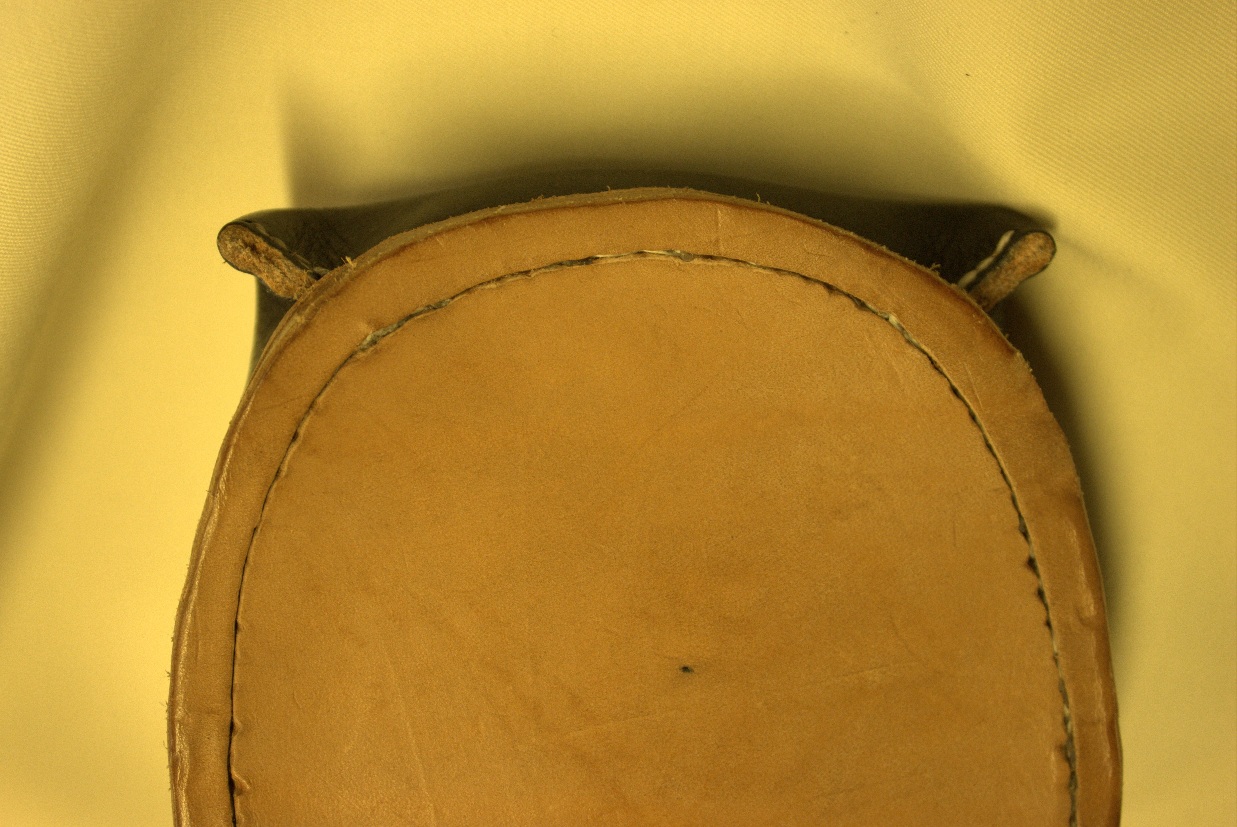
|
|
A close up of the strap. This is a particularly elegant silver buckle, which I had been saving for some time to put to appropriate use.
Another shot of the finished shoes. I’m a fan, and I look forward to wearing them with some Tudor clothes.
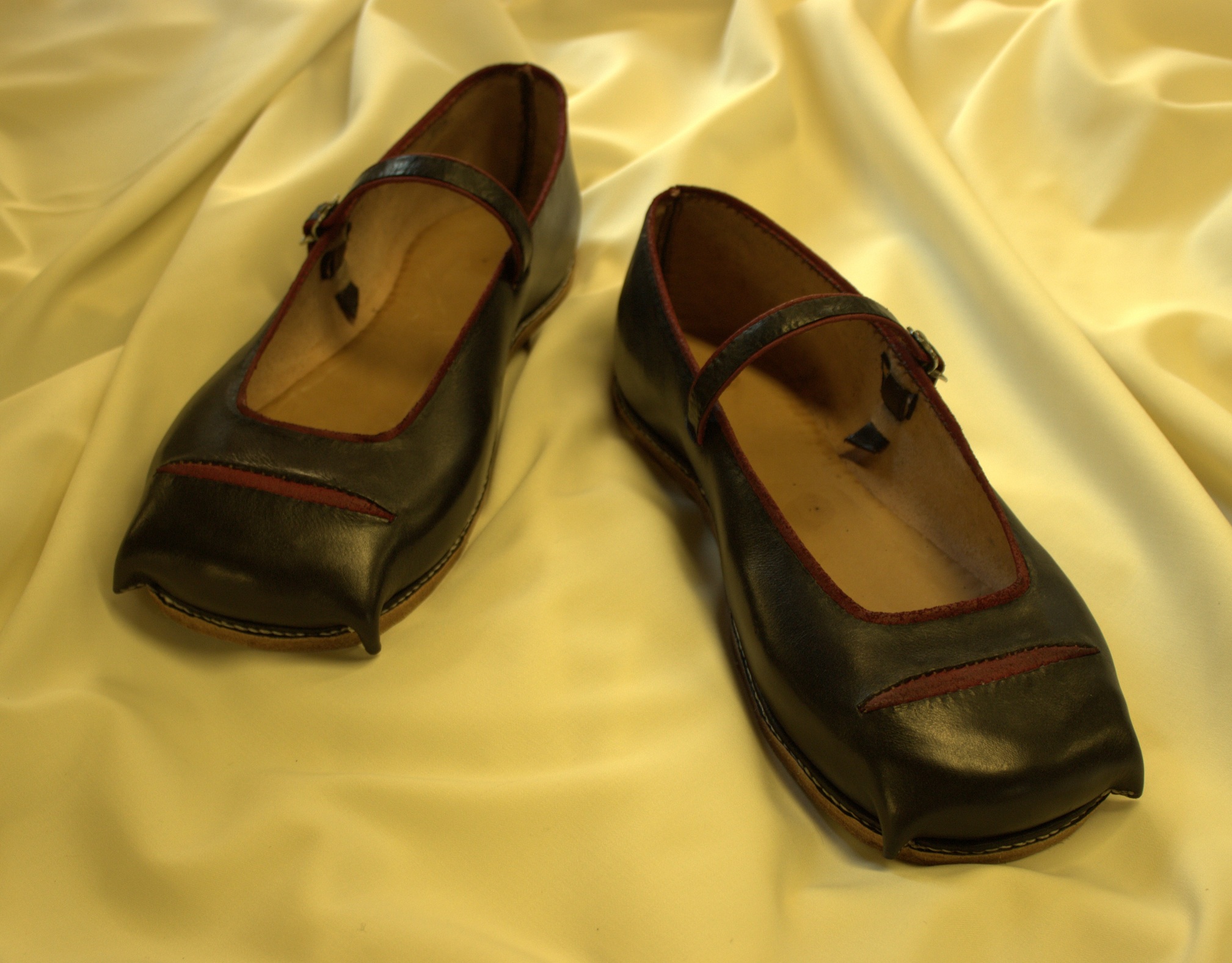
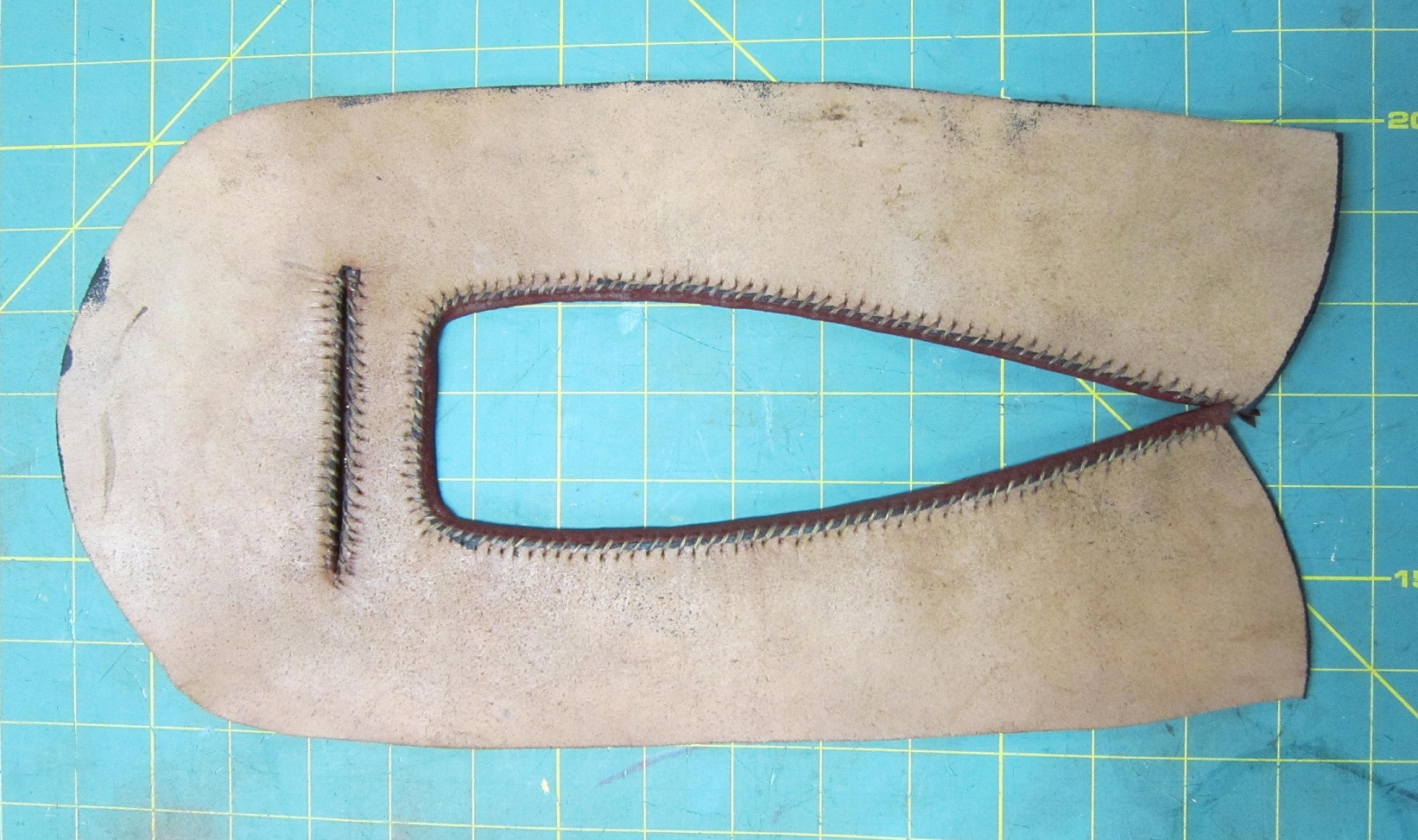
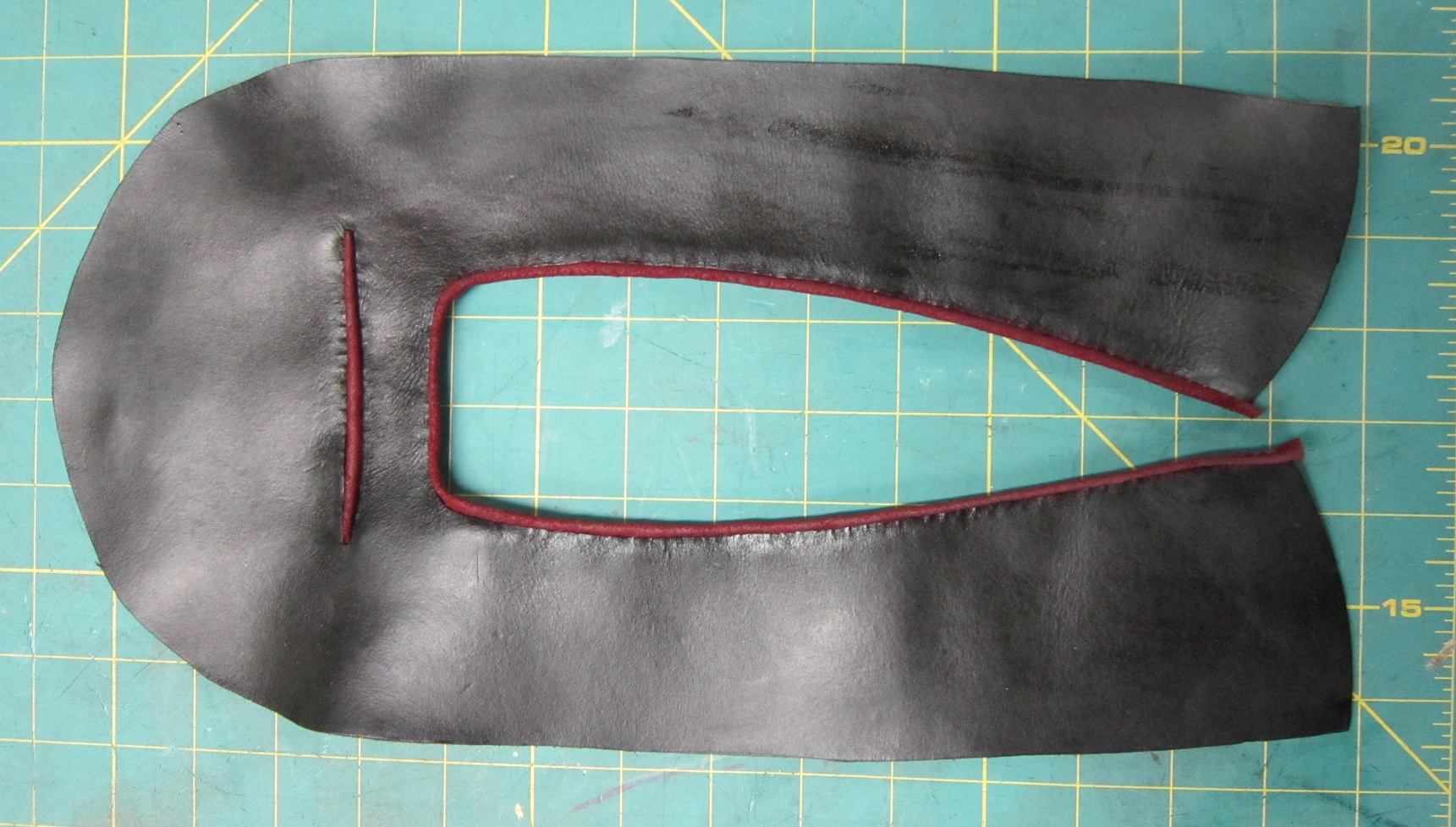
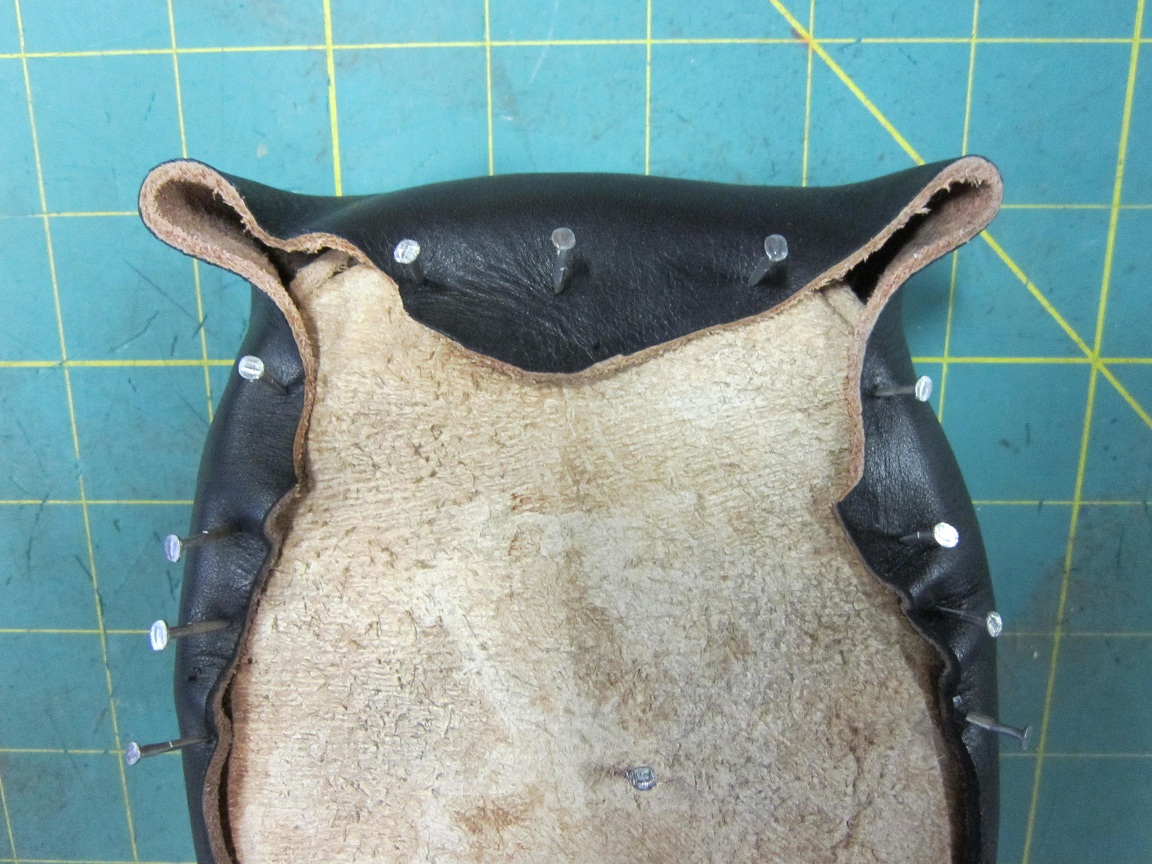
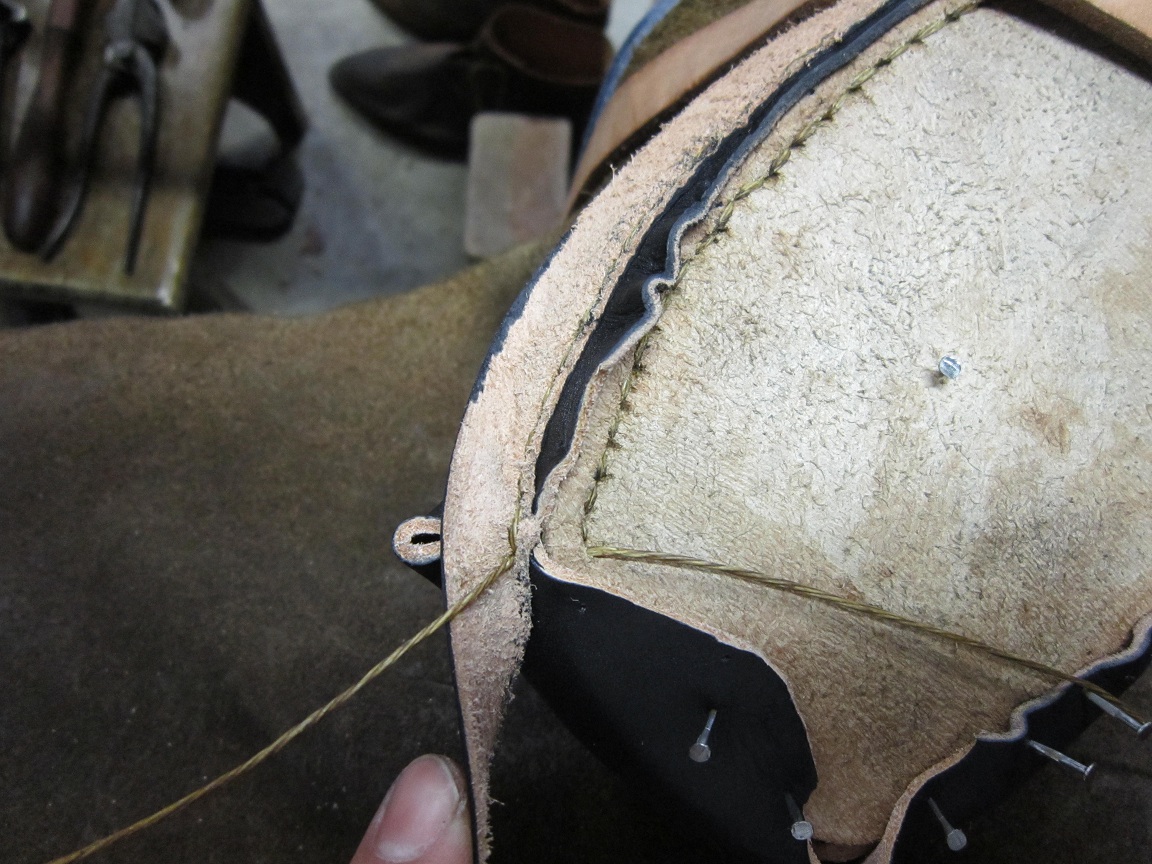



These shoes just made my day. Well done!
Thank you very much for the compliment! They were a totally fun pair to make.
What makes the shoe hold its shape? I assume you had a last that was the shape. I guess I’m having a hard time wrapping my head around how this shoe goes together. How did you come up with the last for the shoe? Did you have a left and right foot last? What was your last made out of? I would really like to make a pair like these, but I don’t know if I have the skill set to do them as nice as you did.
I guess you don’t make shoes for other people?
The are stunning. Nice to see.
Brad
Hi Brad! Thank you for the compliments! Yes, to get the shape, the leather is wet, and then stretched around the last and tacked in place. Then, it is sewn together. The last was carved from layered up wood, but we only made one “straight” last. That is, a last that is symmetric and can be used for both left and right feet. I wouldn’t say that such a pair is easy, but you can get there with a lot of practice. I do occasionally take commissions, though, so please feel free to email me if you’re interested in a quote. Thanks again for the compliments!
Francis
Hi Francis, I can’t seem to find your email on this site. So can I ask you for a quote on these shoes.
Best Regards,
Brad
Hi Brad – sorry for the delay, my spam filter was not working properly. I’ll drop you a quick note on these, and thanks for the interest!
Francis
Hi, wondering about 2015 workshops?
is there a link where upcoming events are posted?
Thanks, Tom
Hi Tom! I will be sure to put you on the list if there is another workshop happening – thanks for the interest!
Francis